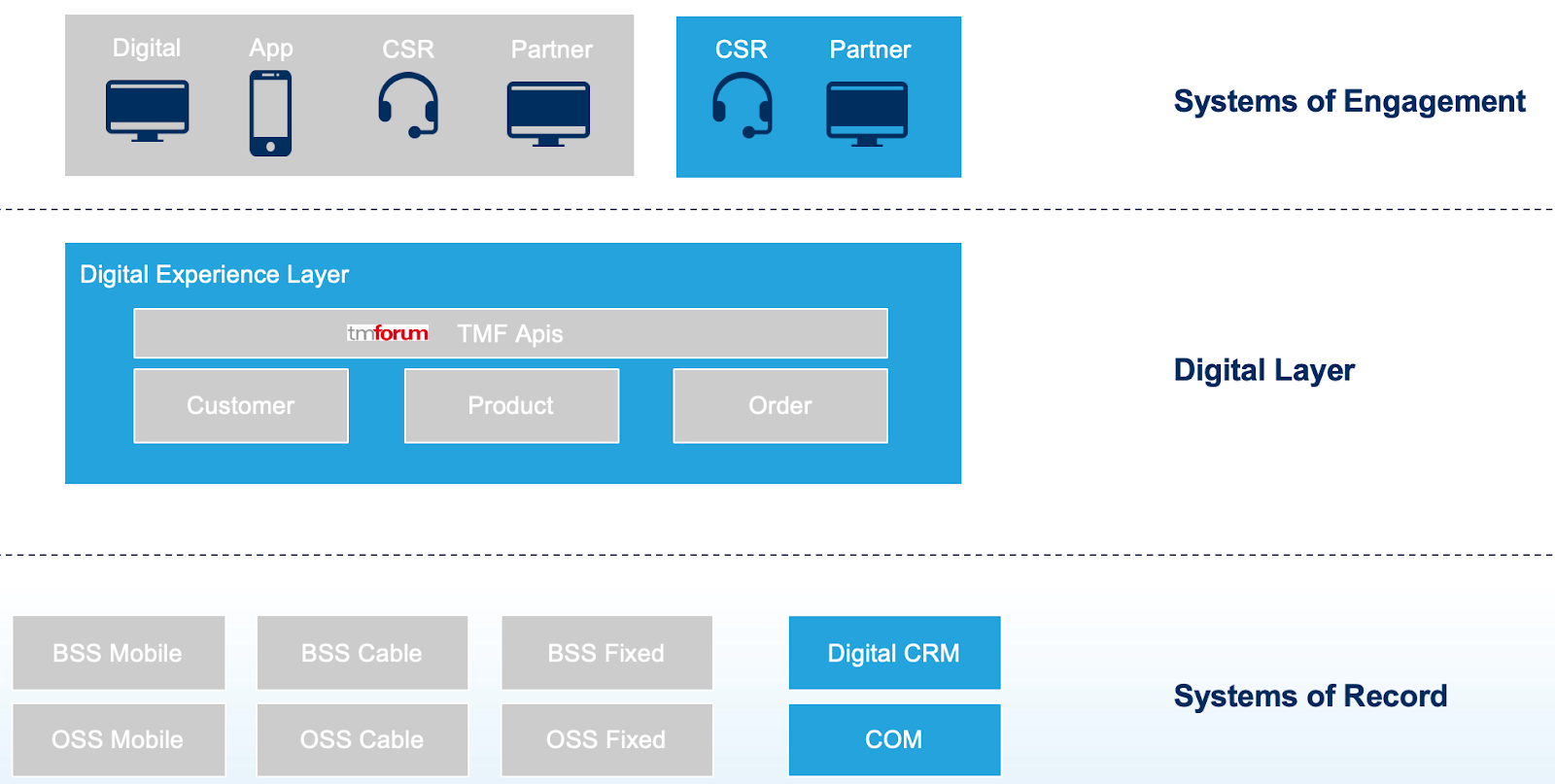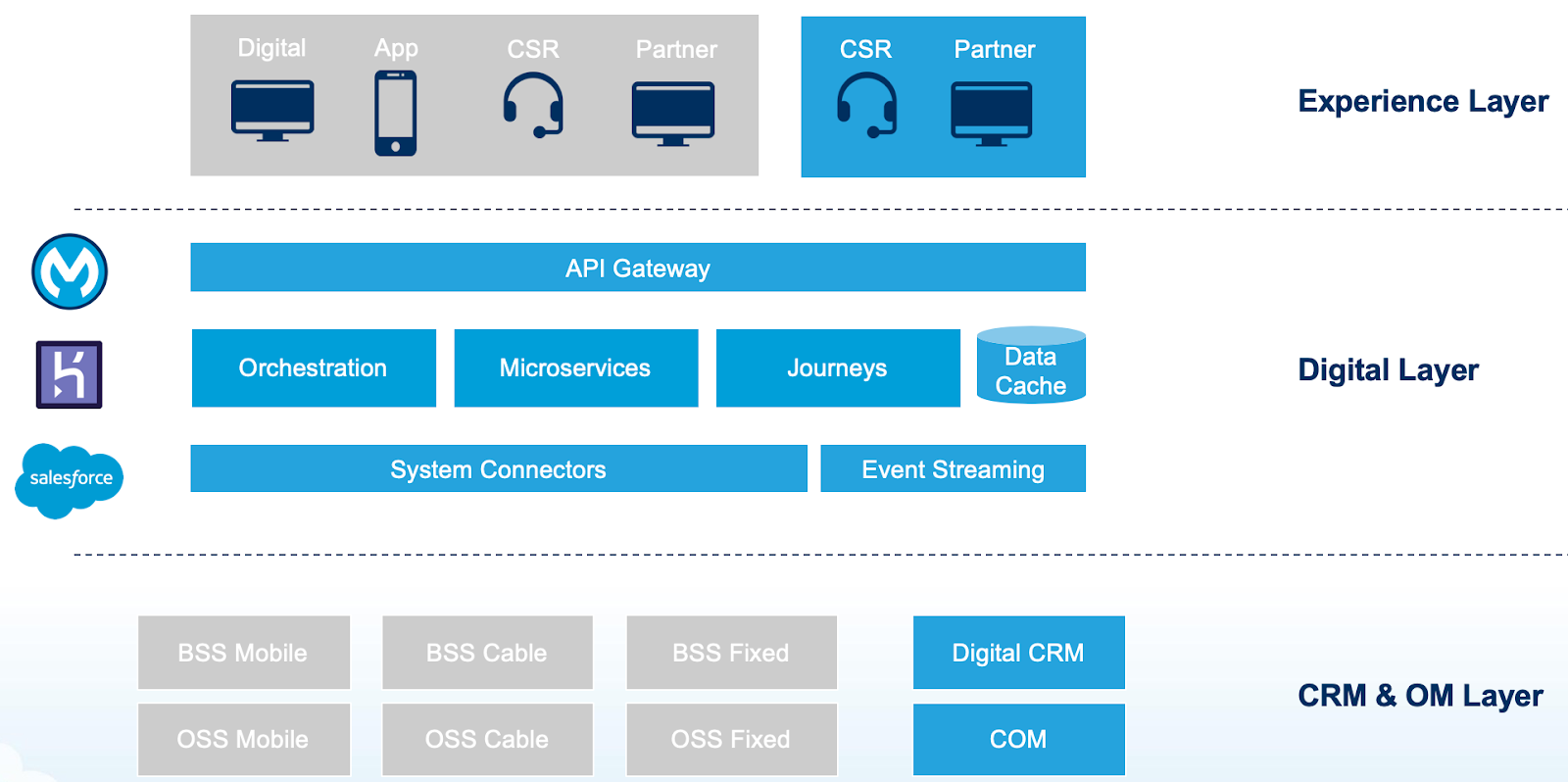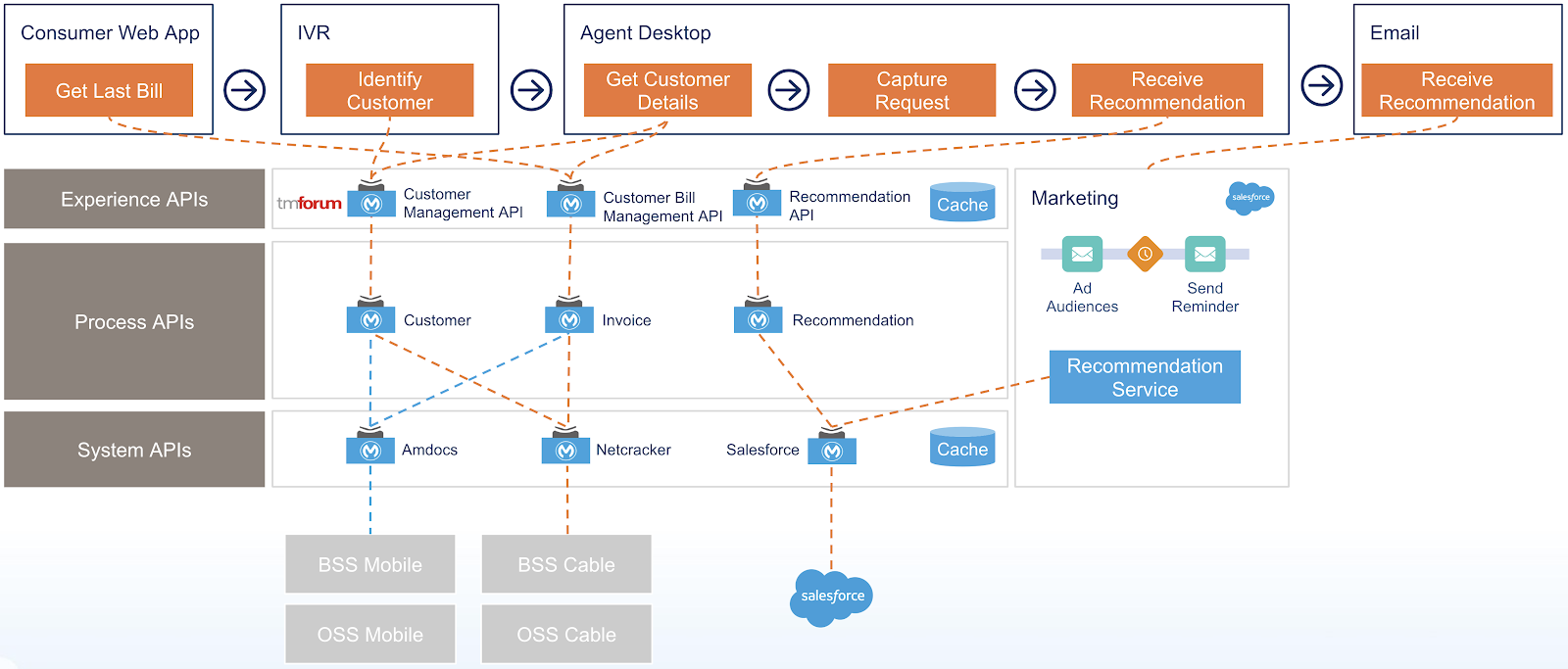It’s time for businesses to revamp their legacy experiences with a digital experience layer. Organizations must move away from a ‘system-centric’ to a ‘domain-driven’ view, where the domains provide a unified view across the business and abstract from the legacy systems.
There are a few ways this can be done. One is with a unified customer view that gives you a common set of your customer data across systems for mobile and fixed line services. Another is with a single order process that can distribute order data from front-end to backend systems.
The domains are reflected through reusable APIs that encapsulate the systems of record so consumers of the APIs can think about domains like customer, product, and order instead of dealing with many different systems. It is now possible to focus on improving business processes, rather than dealing with the complexity and characteristics of the underlying systems.

With API-led connectivity, data can be unlocked from legacy systems whether it is legacy BSS systems, databases, or services. This data can then be used to influence business processes or deliver an experience. This approach enables the central IT teams to expose data and processes without having to migrate or duplicate data or change legacy applications. Developers can discover and self-serve these APIs to build a customer experience.
By implementing a digital experience layer, businesses can modernize their legacy infrastructure with a step-by-step approach. It’s best to start implementing APIs for a small scope, like a new business initiative, to bring business value from day one without interfering day-to-day operations. Over time, the scope will be extended, more features will be added, and legacy systems will be phased out.
The data access can be standardized through APIs that are compliant to the TMF Open API specification that has been adopted globally by many service providers, technology providers, and is supported by Salesforce and MuleSoft.
MuleSoft, Salesforce, and Heroku provide support for the digital experience layer that can be easily integrated and automated as become part of a DevOps approach.

The different components of our digital layer provide you with a wide range of capabilities that help you to address your business needs and remove dependencies from your systems of record in order to become a composable enterprise:
API Gateway:
- Secure APIs, services, and backend systems
- Proxy existing legacy services
- Manage access to APIs
Connectivity:
- Integrate any system with pre-built connectors
- Transform and validate data
- Implement synchronous and asynchronous integration patterns
Orchestration:
- Combine APIs and services across applications and systems
- Connect cloud and on-premise applications
- Define scheduled and event-driven flows
Microservices:
- Build connectivity microservices
- Extend business logic with microservices
Journeys:
- Define customer targeted actions
- Notify customers in real-time
Caching:
- Improve API performance
- Offload backend systems
Let’s run through a scenario to see this in action. A service use case for a billing inquiry shows how the different capabilities can expose data and functionality from the diverged legacy stacks to provide a common view and orchestrate APIs.
This is based on the API-led connectivity model where system APIs unlock data from backend systems, in this example Amdocs, Netcracker, and Salesforce. These system APIs are orchestrated through process APIs and exposed through experience APIs that follow the conventions of the TMF Open API specification:

- A converged consumer uses his mobile app to retrieve his latest bill that includes charges for mobile and cable services. Data is provided by the Customer Bill Management API.
- The customer is not clear about the charges and calls the call center, he will be identified with his phone number. The profile is provided by the Customer Management API.
- The agent retrieves the invoice information with the same API for Customer Bill Management. The invoice data is provided out of the cache.
- The agent captures the request and receives a recommendation. The recommended action is provided by the Recommendation API.
- The marketing journey triggers an email to be sent to the customer.
This example demonstrates how the API building blocks enables reusable business functions on top of existing legacy systems and become composable without the need for immediate replacement.
Key takeaways
To compete with digital natives, CSPs need to provide a low-touch, self service experience across all channels with flexible customer journeys for all lines of business. This can only be enabled through technical capabilities like cloud, APIs, and microservices delivered in a DevOps model combined with agile software methodologies.
This approach helps the business achieve wider objectives like cost reduction by minimizing the time to serve customer requests, increased customer satisfaction through targeted and accurate communication, and an increase in revenue through intelligent recommendations and personalized offers.
Although this is widely recognized, most of the CSPs are struggling to innovate fast enough due to on-premise legacy OSS and BSS systems that can’t handle digital processes and do not have the flexibility to implement fast changes.
Looking at several transformation approaches we believe that carriers can remain competitive against digital natives and OTT players with a digital experience layer that provides immediate business value and the option to gradually modernize the legacy systems without increasing the technical debt or the risk of large scale transformation programs.
For more information on enhancing the customer experience for telecommunications customers, download our whitepaper.









